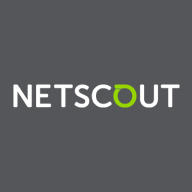

Find out what your peers are saying about Zabbix, Auvik, SolarWinds and others in Network Monitoring Software.
According to errors, exceptions, and code-level details related to their application performance on a daily basis, the application development team tries to help with Splunk AppDynamics to reduce errors and exceptions, which helps the end users get application availability and feel more confident.
To understand the magnitude of it, when the company asked to replace Splunk AppDynamics with another tool, I indicated that for the proposed tool, we would need five people to do the analysis that Splunk AppDynamics enables me to do.
It's very hard to find ROI because we are currently focused only on the on-premises applications.
They need to work on their response time and overall competence.
The distributor's support is rated an eight out of ten, indicating room for improvement in SLA handling.
I am actually happy with technical support from NETSCOUT.
AppDynamics is much more helpful.
We got a contact, an account manager, to work directly with for technical support.
They help us resolve any issues raised by our team relating to operations, application instrumentation, or any other issues.
The solution is highly scalable and accommodates the growth needs effectively.
It is not similar to software solutions Datadog or Dynatrace where they can easily add agents without problems.
We have reached maximum capacity in our tier, and extending capacity has not been cost-effective from Splunk's perspective.
I would rate the scalability of Splunk AppDynamics as a nine out of ten.
I assess how Splunk AppDynamics scales with the growing needs of my organization as good, since we are growing and adding more servers.
Datadog is more stable than NETSCOUT nGeniusONE, being a SaaS-based solution compared to on-prem solutions like NETSCOUT.
I rate the stability of NETSCOUT nGeniusONE as ten out of ten since we have not experienced any escalations or downtime issues from the end user's side.
Customers are more sensitive about NETSCOUT nGeniusONE's upgrades because it has hardware.
It is necessary to conduct appropriate testing before deploying them in production to prevent potential outages.
There are no issues or bugs with the 20.4 version; it is very stable with no functionality or operational issues.
I can rate it nine out of ten.
Customers want to have service assurance, including NPM and APM, from one vendor.
It would be beneficial to see more AI capabilities included in nGeniusONE to further streamline processes.
Many big companies Samsung and Hyundai try to build their own monitoring solutions using open-source tools and their own engineers, though it has not been successful.
Splunk AppDynamics does not support the complete MELT framework, which includes metrics, events, logging, and tracing for the entire stack.
If AppDynamics could develop a means to monitor without an agent, it could significantly improve application performance and reduce potential problems.
A good integration with Splunk would be very interesting, as Splunk is a good product for logs, and that part is currently missing in Splunk AppDynamics.
The cost depends on the size of the customer, as sizing controls the pricing.
We completed a three-year deal for Splunk and for AppDynamics, which costs millions of dollars.
Customers have to pay a premium price, however, they receive considerable value from the product.
All these solutions at the moment are cheap, but it is like paying for insurance; you pay insurance to avoid major damage.
The capability of real-time traffic intelligence is also very useful because it allows for the comparison between real-time and historical packet levels.
Their analysis capability actually surpasses other APM solutions, which is why customers love it.
We have multiple tools, but end users prefer to use Splunk AppDynamics because their portal navigation is very simple and clear.
The real user monitoring and digital experience monitoring effectively track actual user experience with the applications, including page loading, interaction time for both desktop and mobile applications.
The feature that I appreciate in AppDynamics Browser Real-User Monitoring is the intuitive and user-friendly dynamic mapping it creates for workflows.
| Product | Market Share (%) |
|---|---|
| NETSCOUT nGeniusONE | 1.5% |
| Zabbix | 11.4% |
| SolarWinds NPM | 4.4% |
| Other | 82.7% |
| Product | Market Share (%) |
|---|---|
| Splunk AppDynamics | 4.1% |
| Dynatrace | 8.9% |
| Datadog | 7.4% |
| Other | 79.6% |


| Company Size | Count |
|---|---|
| Small Business | 15 |
| Midsize Enterprise | 3 |
| Large Enterprise | 37 |
| Company Size | Count |
|---|---|
| Small Business | 55 |
| Midsize Enterprise | 36 |
| Large Enterprise | 188 |
Splunk AppDynamics enhances application performance monitoring with advanced diagnostics and real-time insights, offering seamless end-to-end transaction tracking and infrastructure visibility.
AppDynamics provides critical tools for businesses to analyze application behavior and performance. Through innovative features like transaction snapshot analysis and adaptable dashboards, users can quickly identify and address issues, ensuring high levels of system uptime and efficiency. It is designed to support complex environments including Kubernetes and AWS, enhancing user experience by detecting performance issues early. Despite needing improvements in network monitoring and integration, it remains a robust option for tracking application health.
What are the key features of AppDynamics?In industries like financial services and e-commerce, AppDynamics facilitates performance tracking across distributed systems, optimizing infrastructure to meet consumer demands. It excels in environments needing precise transaction monitoring and is pivotal in delivering high value and satisfaction.
We monitor all Network Monitoring Software reviews to prevent fraudulent reviews and keep review quality high. We do not post reviews by company employees or direct competitors. We validate each review for authenticity via cross-reference with LinkedIn, and personal follow-up with the reviewer when necessary.